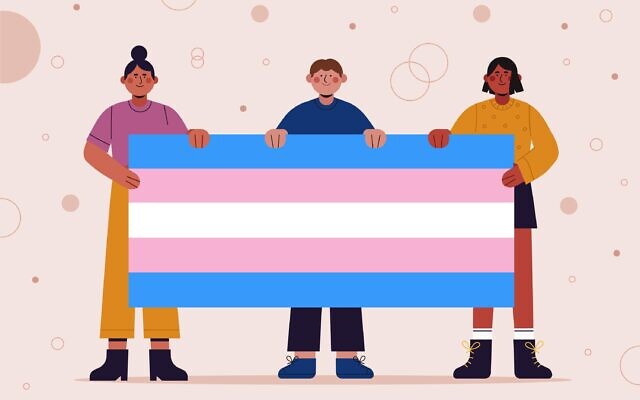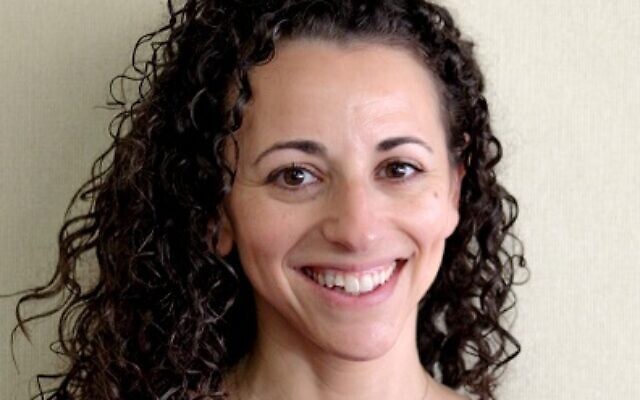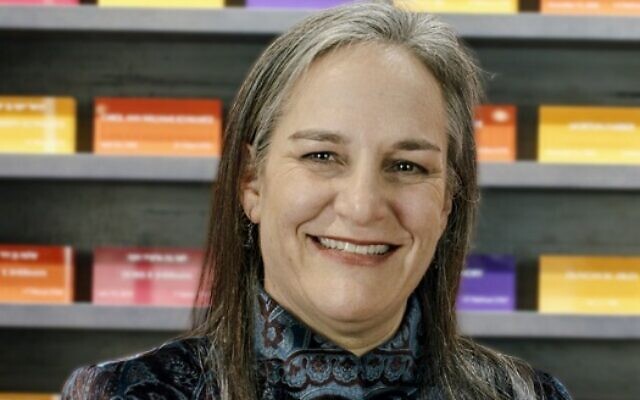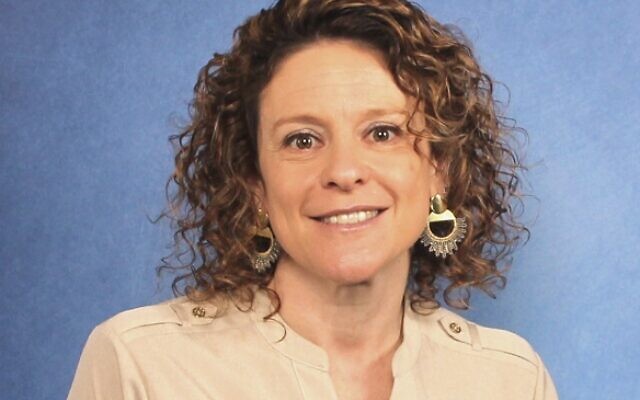Jews Challenged to Understand Transgender World
The Talmud cites eight designations of sexual characteristics, even one for Abraham and Sarah.

Just a few weeks before the 23rd Transgender Day of Remembrance on Nov. 20, which honors the memory of transgender people whose lives were lost in acts of anti-transgender violence, several Jewish households in Atlanta received mailers reciting a number of transphobic talking points.
The leaflets alleged that schools were using gender support plans to change students’ identities without parental knowledge, that medical gender-affirming care is harmful and that a growing number of young adults are “de-transitioning,” or reverting to their assigned biological gender.
In response to what they described as “intentionally inflammatory and misleading” language in the mailers sent by the right-wing, anti-trans Independent Women’s Forum, SOJOURN: Southern Jewish Resource Network for Gender & Sexual Diversity, rebutted the “untruths” and provided a Jewish reply.
“The Jewish response, one based on the ideas of pikuach nefesh (saving lives) and b’tzelem Elohim (all people are created in the image of G-d) is one that supports trans people,” the group countered.

“The Jewish community is realizing that embracing people with diverse gender identity is an important part of keeping the Jewish community in the South thriving,” said Rose Kantorczyk, SOJOURN’s communications associate. “We are seeing Jewish organizations be more conscious of the fact that there are gender- and sexually-diverse people in their midst. The South is not in a place of being hostile to the trans community, but we just don’t know much and have to learn.”
Several Atlanta synagogues are tentatively placing their toes in this distinct pool of vocabulary and culture. In early November, Congregation Or Hadash held a Gender 101 program, facilitated by SOJOURN, that was initiated originally to discuss gender divisions in programming, such as assuming only men would be interested in a “steak and scotch” program in the sukkah. It was promoted as a “conversation on the changing landscape of gender identity and implications for modern Judaism.”
“It was a great meeting, even though it wasn’t what I envisioned,” said congregant Howard Maziar. “The meeting was filled with people who wanted a better understanding. One person had a trans grandchild she wanted to be able to relate to. But it wasn’t political. I was moved by the genuineness of the conversation.”
The day before, Congregation Bet Haverim, founded in the 1980s by gays and lesbians, held a meeting, also facilitated by SOJOURN. “We didn’t focus our program on one demographic,” explained Rabbi Mike Rothbaum. “We wanted everyone to understand the terms and experiences” of people who identify as trans, or gender diverse.
Rothbaum, who said he received anti-Democratic candidate glossy mailers before the November mid-term elections that were “really gross” anti-trans, pointed out that his synagogue also held a Transgender Day of Remembrance. And while Bet Haverim had long used “end of hiding prayers” for gays and lesbians, the synagogue has since updated the prayers to include the trans community.
Other Atlanta congregations have held Pride Shabbat and Pride Alliance programming, but SOJOURN Executive Director Rebecca Stapel-Wax said she “would love to have the city work together so the programming isn’t piecemeal. It’s easy to go from one event to another. We’ve been doing this for over a dozen years, going to different organizations” to educate about members of the Jewish community who reflect gender and sexual diversity.

But she asserts that the Atlanta Jewish community needs a more structured program that includes the entire community. “SOJOURN doesn’t have the financial backing at this point,” to take on such an endeavor. Recently, though, in addition to hiring a full-time communications director, it just hired a development person and it is looking for a full-time programming director. Stapel-Wax said it would be “useful if the clergy were involved.”
In fact, according to the president of the Atlanta Rabbinical Association, Rabbi Alexandria Shuval-Weiner of Temple Beth Tikvah, the group has “offered diversity equity inclusion trainings for the rabbinical body as well as opportunities for sharing of queries, plans and teachings to strengthen our ability to better meet the needs of all souls within the community.”
There’s an awareness that the number of those “souls” has been growing in the American Jewish community. At the Union for Reform Judaism, Rachel Hall is the assistant director for Racial Equity, Diversity and Inclusion Content. She explained that “when the world shut down due to the COVID pandemic, it provided an opportunity for people to be themselves. People are choosing their own definitions of themselves. In the past, they didn’t have that choice.”
Indeed, Kantorczyk said that as they [Kantorczyk’s pronoun] looked back on their childhood, “I was always a little bit different. I presented myself as androgynous. I had short curly hair and kids asked if I was a boy or girl. In middle school, I wasn’t doing girl ‘right.’ In my early teens, I wanted to fit in. It wasn’t until I graduated college in 2020, during the pandemic when many of us spent time by ourselves, removed from pressures of interacting with people, that I realized how I felt in a vacuum. I learned I had words for it. Young people have a bigger vocabulary to describe themselves.” Kantorczyk uses transmasculine to describe themselves.
Hall said that in the general population, 25 percent of youth under 29 identify as LGBTQ+, and the “Jewish community is the same.”
But as individuals are defining or redefining themselves and their genders, their families and the rest of their communities are trying to understand and support their loved ones. It is a challenge.
In autumn 2021, the URJ, along with Keshet, which works for the full equality of all LGBTQ+ Jews and families, partnered with the Jewish Grandparents Network to create a series of virtual programs to help the Jewish community meet that challenge. As the program website notes, “Children are growing up in a world that is new to many of us. Terms like ‘non-dominant identities,’ ‘REDI’ (racial equity, diversity and inclusion), ‘transgender’ and ‘nonbinary’ may feel unfamiliar and even uncomfortable.”
The first of the sessions, not surprisingly, focused on pronouns. Anyone who receives emails might notice an increasing number of people are adding in their signatures at the end of their missives, the pronouns they prefer.

As Tracey Labgold, Florida education and training manager of Keshet, explained, a child’s sex is assigned at birth by a doctor or nurse based on what the baby’s external genitalia suggest. “But gender identity is internal,” she said. Someone who is cisgender identifies with the gender they were assigned at birth. Someone who is transgender means that their assigned gender is not aligned with their gender identity. According to Labgold, children understand their sense of identity at 18 months old. “As a child, I didn’t know that I could be Jewish and gay. I learned that I don’t have to choose.”
Separately, the term bisexual is based on who a person is attracted to, not what gender he, she or they identify as.
Labgold said that as many as 72 percent of trans youth attempt suicide. “This number is cut in half if the child is raised in a gender-affirming household,” she said, citing studies from The Trevor Project, an organization for suicide prevention in the LGBTQ+ communities.

A group of grandparents approached Keshet, eager to learn more about their transgender grandchildren. “Grandparents are coming to us to help support their grandchildren,” said Labgold. Hall added, “grandparents are wise, generous brave souls. They want to know what sports their grandchildren play, and they want to know what pronouns to use.”
According to Stapel-Wax, “everybody is growing and learning,” not just grandparents. “The older generation is confused because they have not had the experience and exposure to the transgender world, but it is critical for them to explore. It’s like learning a new language.”
But while most of the terms associated with the transgender world seem foreign to many people, it’s notable that gender differences are not new in the Jewish world.
As Rothbaum pointed out, the Talmud, a collection of Jewish legal traditions, mentions eight designations: “Zachar,” which is Hebrew for male; “nekevah,” which is Hebrew for female; “androgynos,” having both male and female characteristics; “tumtum,” lacking sexual characteristics; “aylonit hamah,” identified female at birth but later naturally developing male characteristics; “aylonit adam,” identified female at birth but later developing male characteristics through human intervention; “saris hamah,” identified male at birth but later naturally developing female characteristics; and “saris adam,” identified male at birth and later developing female characteristics through human intervention.
“The texts teach us that Abraham and Sarah were tumtum before they conceived Isaac,” he said.
The important point that these professionals emphasize is that those who identify as transgender should feel more than welcomed in the Jewish community, but actually “celebrated for what they bring, rather than tolerated,” said Kantorczyk.
Labgold uses the Hebrew word, “kavod,” or honor. “We want to respect everyone because we’re all created in G-d’s image.”
Stapel-Wax is optimistic that the Jewish community is making progress. “We are partnering with Keshet for a project starting in February,” she said. The Sojourn-Keshet Shivyon [Hebrew, for equality] Southern Cohort is for any Southern Jewish organization that wants to provide “a place where LGBTQ+ Jews feel they truly belong. Jewish sustainability is incredibly important. If people don’t feel welcome, they will go elsewhere.”
For more information, go to www.programs@sojourngsd.org.
- News
- Local
- Jan Jaben-Eilon
- Transgender Day of Remembrance
- gender support
- Independent Women’s Forum
- SOJOURN
- Southern Jewish Resource Network for Gender & Sexual Diversity
- Pikuach Nefesh
- B’Tzelem Elohim
- Rose Kantorczyk
- Congregation Or Hadash
- Gender 101
- Howard Maziar
- Congregation Bet Haverim
- Rabbi Mike Rothbaum
- Rebecca Stapel-Wax
- Atlanta Rabbinical Association
- Rabbi Alexandria Shuval-Weiner
- temple beth tikvah
- Union for Reform Judaism
- Rachel Hall
- REDI
- racial equity
- diversity and inclusion
- nonbinary
- Tracey Labgold
- The Trevor Project
- LGBTQ
- Talmud
- Sojourn-Keshet Shivyon



comments